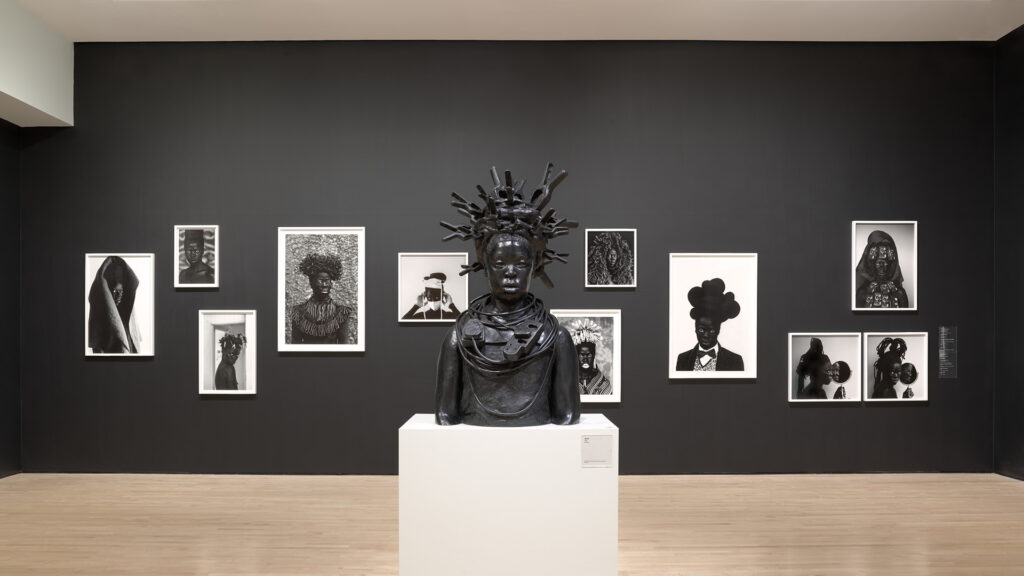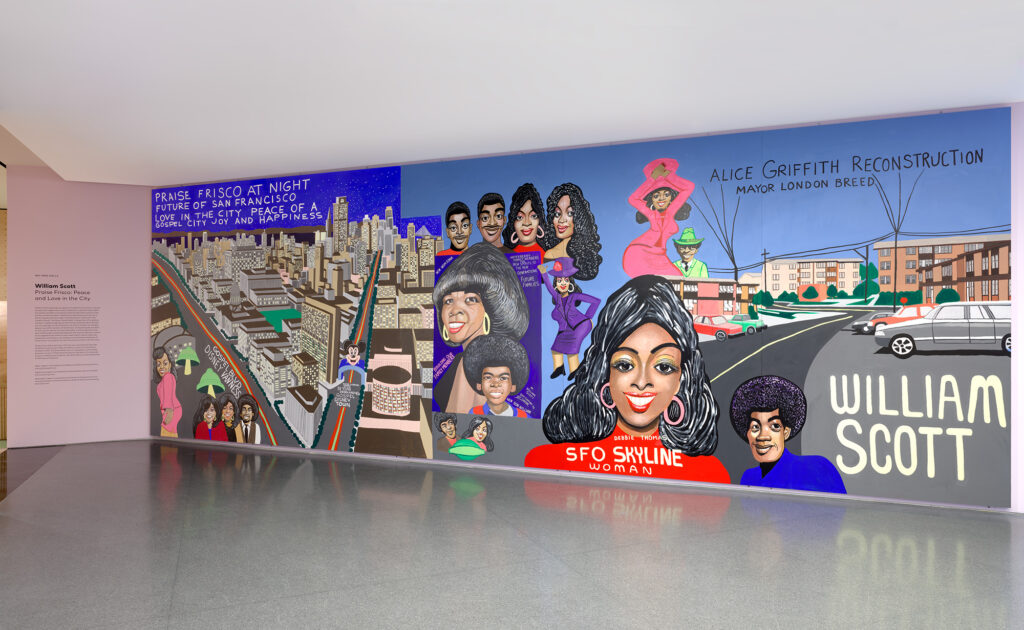Overview
Photography is everywhere. It is in the museum, but it’s also on city walls, in magazine pages, and on our phones. Practiced by all — amateurs, professionals, and artists, no matter their geographic, social, or ethnic backgrounds — photography is fundamentally democratic.
One of the first American museums to recognize photography as an art form, SFMOMA’s photography collection encompasses work from daguerreotypes made in the first years of the medium’s existence to digital imagery produced by experimental contemporary artists. The largest collecting area in the museum, photography has been an integral part of SFMOMA since its founding in 1935, due to the formative presence of Bay Area artists such as Ansel Adams, Dorothea Lange, Edward Weston, and Imogen Cunningham.
SFMOMA’s pioneering commitment to photography continues today, even as the definition of the medium continues to evolve. By bringing together all of its forms — prints, projections, and installations — we aim to propose a fresh approach to exhibiting photography at SFMOMA, one that embraces the inherently modern and democratic qualities of photography in the current era.
History of Photography at SFMOMA
When SFMOMA first opened its doors in 1935, the Bay Area was home to one of the most vibrant photography communities in the country. Work from that community, which included Ansel Adams, Imogen Cunningham, and Edward Weston, among others, formed the core of the museum’s collection. These artists, collectively known as group f/64, promoted photography as a vital modern art form and celebrated the medium for its sharp clarity and its ability to render, in the words of Weston, “the very substance and quintessence of the thing itself.” The majority of their works were acquired through major gifts from key donors, including trustee and patron Albert M. Bender. Ansel Adams also served as an advisor to Director Grace McCann Morley, encouraging her to mount photography exhibitions and grow the museum’s collection. In 1952, Adams was instrumental in convincing Georgia O’Keeffe to sell and donate the Alfred Stieglitz collection to SFMOMA.
John Humphrey, who joined the staff in 1935, was the first curator at the museum to actively promote photography. Though he was not a specialist in the medium, Humphrey recognized the importance of photography to SFMOMA and its audience. By stewarding relationships with collectors and other institutions, Humphrey shepherded acquisitions such as the donation of the Henry Swift Collection and connected SFMOMA with the exhibition programs of other major museums, including the Art Institute of Chicago and the Museum of Modern Art, New York. Most importantly he convinced the museum’s leadership to create a separate fund for photography acquisitions.
In 1979 Van Deren Coke was appointed photography curator, and in 1980 a separate photography department was founded, with Coke as its director. Coke saw himself as a counterweight to the traditions and philosophy of the Museum of Modern Art, New York. He sought to build a distinctive program, and instead of collecting the documentary tradition of photography being championed in New York, he promoted highly experimental, self-consciously artistic work. His chief interest was in European Surrealism and the German avant-garde. A photographer himself, Coke was also deeply interested in the work of his contemporaries (many of the approximately six thousand works in the collection made in the 1970s were acquired during his tenure).
At Coke’s retirement in 1987, Sandra S. Phillips was appointed curator (and later, senior curator) and saw a new possibility in the examination of documentary work. During her tenure, the photography department organized major exhibitions of artists such as Dorothea Lange, Wright Morris, Helen Levitt, Diane Arbus, Henry Wessel, Larry Sultan, and Garry Winogrand. Phillips built on Coke’s early interest in Japanese photography, giving solo shows to Daido Moriyama and Shomei Tomatsu and building a particularly robust collection of Japanese work, which was amplified by a major gift from the Kurenboh Foundation in 2012. Phillips was also keenly interested in the continuous tradition of documenting land use in the West, from the nineteenth century to the present. In addition to organizing exhibitions such as Ansel Adams at 100 and Crossing the Frontier, she built the museum’s collection of Western landscape photography. Under Phillips’s direction, the department viewed the entire medium as a modernist tradition, exhibiting and collecting a rich and complex range of vernacular photography, from nineteenth-century scientific images to snapshots, mugshots, and surveillance photography. By 2016, the collection had more than doubled in size to become the largest at SFMOMA.
Phillips was appointed curator emerita in 2016 and in 2017 Clément Chéroux joined the museum as senior curator. Chéroux is interested in building on the museum’s considerable holdings of entire series, including Larry Sultan and Mike Mandel’s Evidence, Jim Goldberg’s series Rich and Poor, and Nicholas Nixon’s The Brown Sisters, among many others. Chéroux’s collecting plan centers on building holdings of single photographers or series in greater depth, focusing on contemporary art, and more closely linking the museum’s collecting activity to its exhibitions program.
Collection Highlights
-
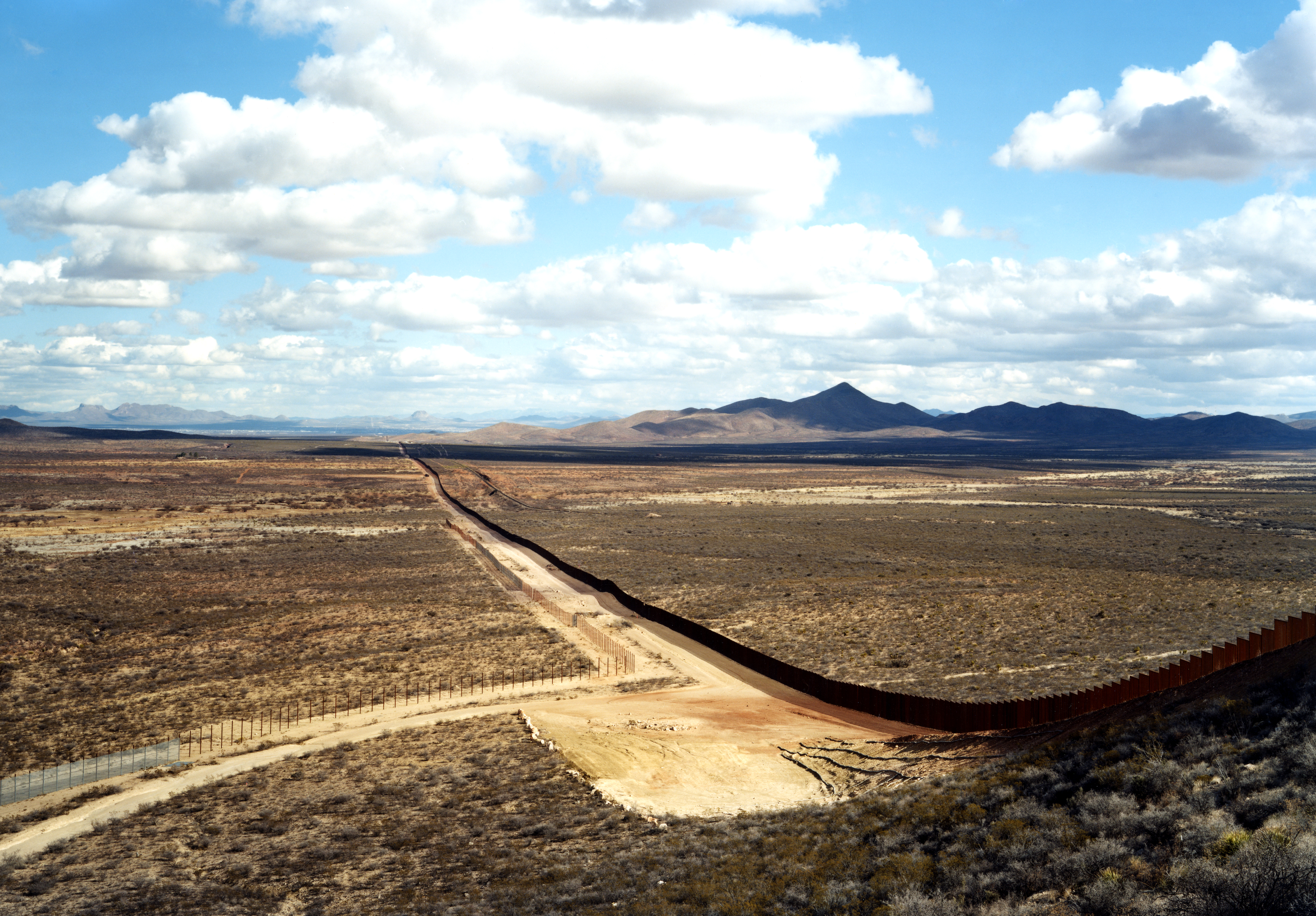 Victoria SambunarisUntitled (Border Fence), Near Naco, Arizona2010
Victoria SambunarisUntitled (Border Fence), Near Naco, Arizona2010 -
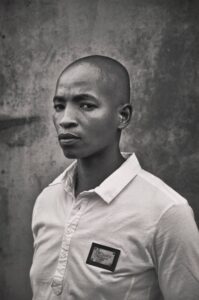 Zanele MuholiGazi T Zuma, Umlazi, Durban2010
Zanele MuholiGazi T Zuma, Umlazi, Durban2010 -
Alejandro CartagenaFragmented Cities, Juarez #2, from the series Suburbia Mexicana2007
-
Yvonne VenegasNirvana from the series María Elvia de Hank2006
-
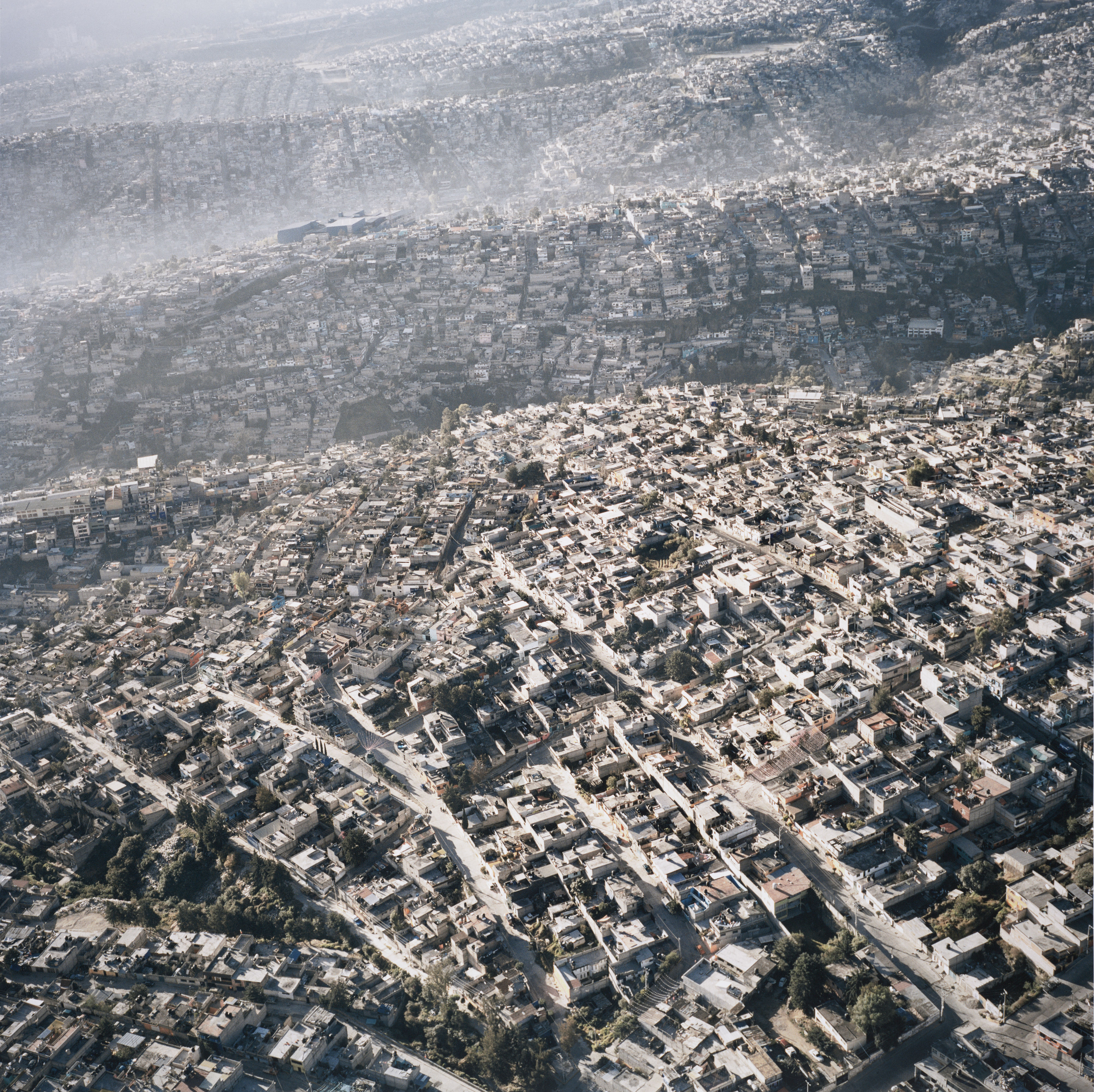 Pablo López LuzVista Aérea de la Ciudad de México, XIII (Aerial View of Mexico City, XIII)2006
Pablo López LuzVista Aérea de la Ciudad de México, XIII (Aerial View of Mexico City, XIII)2006 -
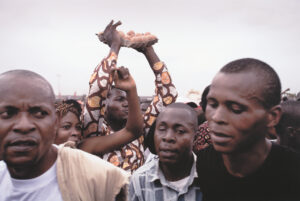 Guy TillimSupporters of Jean-Pierre Bemba mock President Kabila, calling him an egg seller (in reference to Kabila's statement that he could not take part in early election debates because he was balancing the delicate affairs of state on his head, as an egg seller2006
Guy TillimSupporters of Jean-Pierre Bemba mock President Kabila, calling him an egg seller (in reference to Kabila's statement that he could not take part in early election debates because he was balancing the delicate affairs of state on his head, as an egg seller2006 -
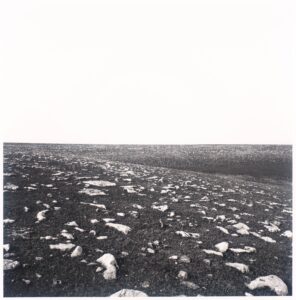 Joe DealFlint Hills, from the series West and West2006
Joe DealFlint Hills, from the series West and West2006 -
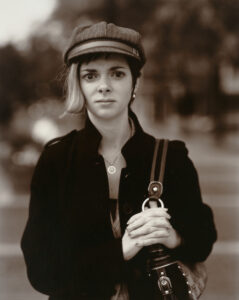 Judith Joy RossMichelle Fraser, Protesting the U.S. War in Iraq, Bethlehem, Pennsylvania, from the series Protest the War2006
Judith Joy RossMichelle Fraser, Protesting the U.S. War in Iraq, Bethlehem, Pennsylvania, from the series Protest the War2006 -
Marco BreuerPan (C-412)2004
-
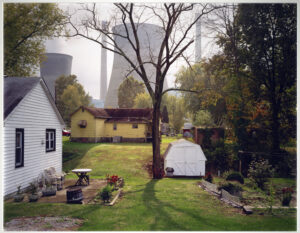 Mitch EpsteinAmos Coal Power Plant, Raymond, West Virginia, from the series American Power2004
Mitch EpsteinAmos Coal Power Plant, Raymond, West Virginia, from the series American Power2004 -
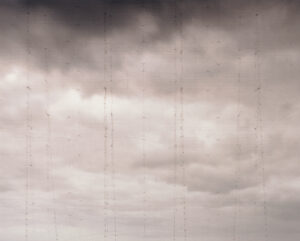 Simon NorfolkThe BBC World Service Atlantic Relay Station at English Bay, from the series Ascension Island: The Panopticon2003
Simon NorfolkThe BBC World Service Atlantic Relay Station at English Bay, from the series Ascension Island: The Panopticon2003 -
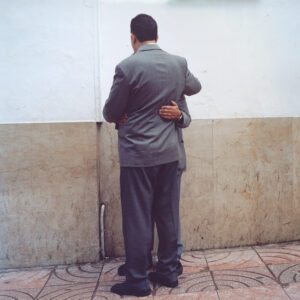 Yto BarradaRue de la Liberté, Tangier, 20002000
Yto BarradaRue de la Liberté, Tangier, 20002000 -
 Allan SekulaDear Bill Gates1999
Allan SekulaDear Bill Gates1999 -
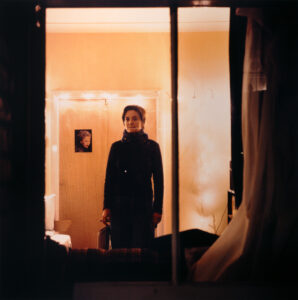 Shizuka YokomizoStranger No. 21999
Shizuka YokomizoStranger No. 21999 -
Anthony HernandezLandscapes for the Homeless #11988
-
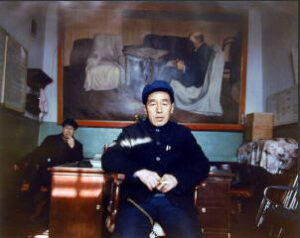 Reagan LouieCadres and Painting of Lenin, Yanoli, from the series Towards a Truer Life1987
Reagan LouieCadres and Painting of Lenin, Yanoli, from the series Towards a Truer Life1987 -
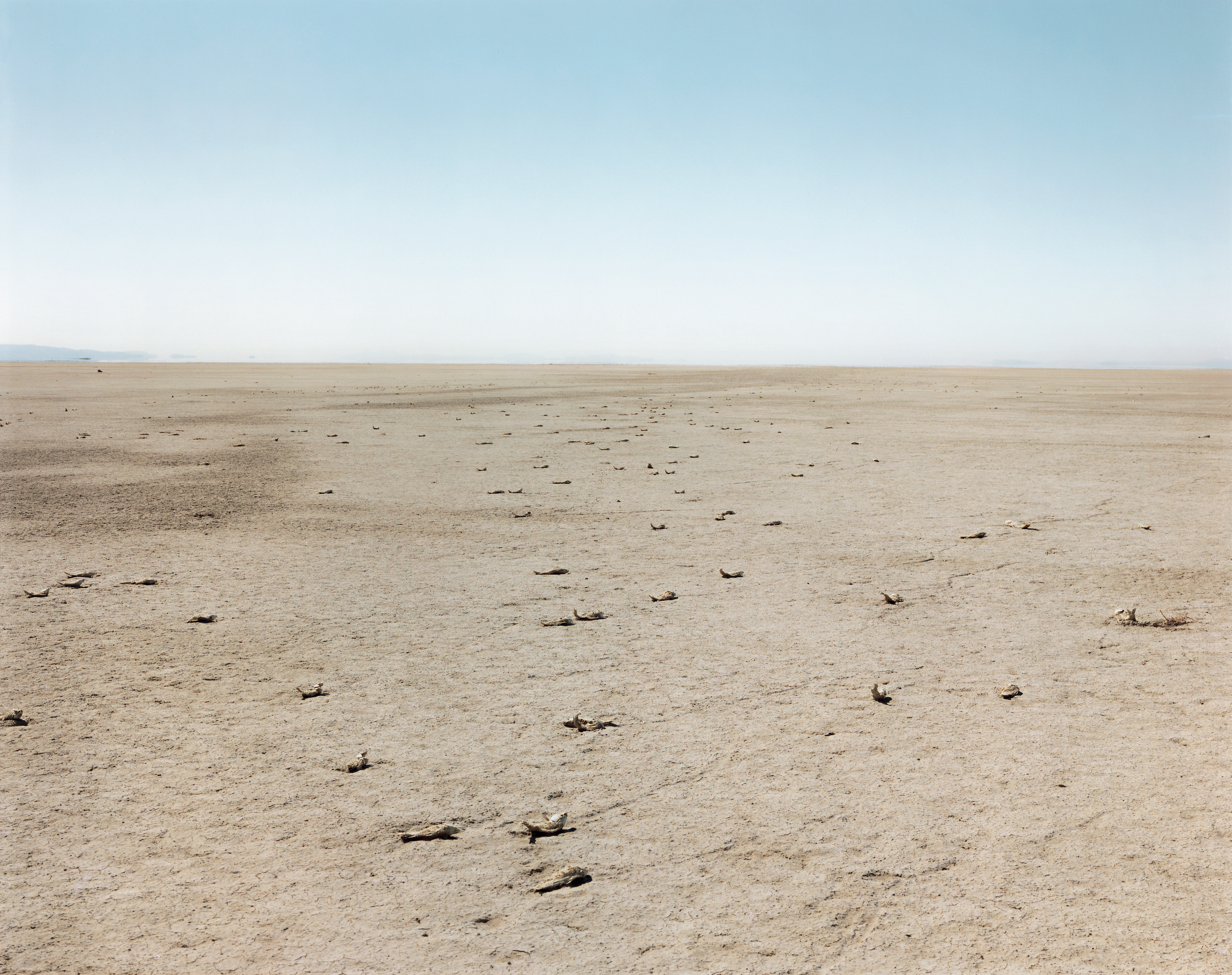 Richard MisrachDead Fish, Bravo 20 Bombing Range, from the series Desert Canto V: The War1986, printed 2006
Richard MisrachDead Fish, Bravo 20 Bombing Range, from the series Desert Canto V: The War1986, printed 2006 -
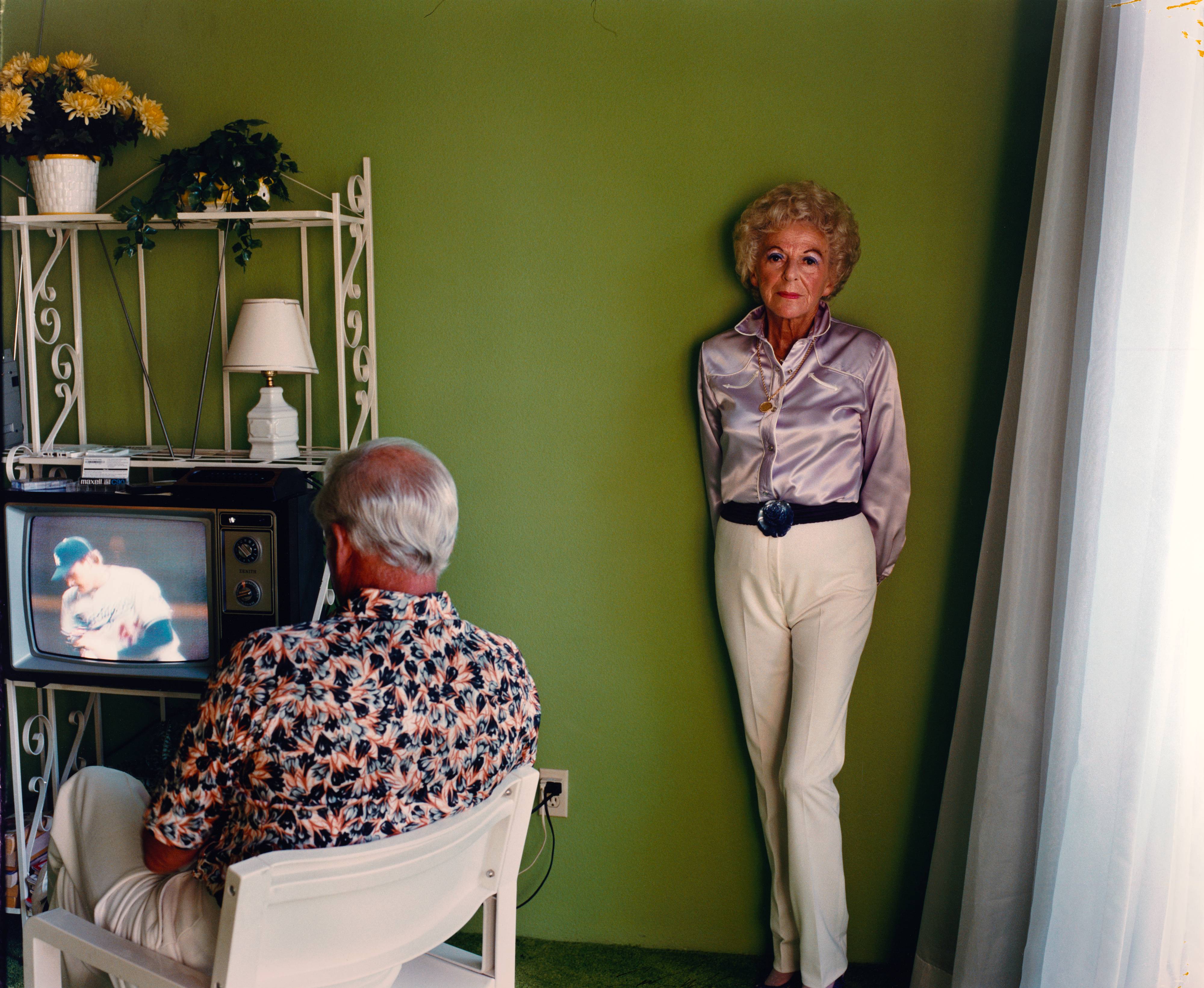 Larry SultanMy Mother Posing for Me, from the series Pictures from Home1984
Larry SultanMy Mother Posing for Me, from the series Pictures from Home1984 -
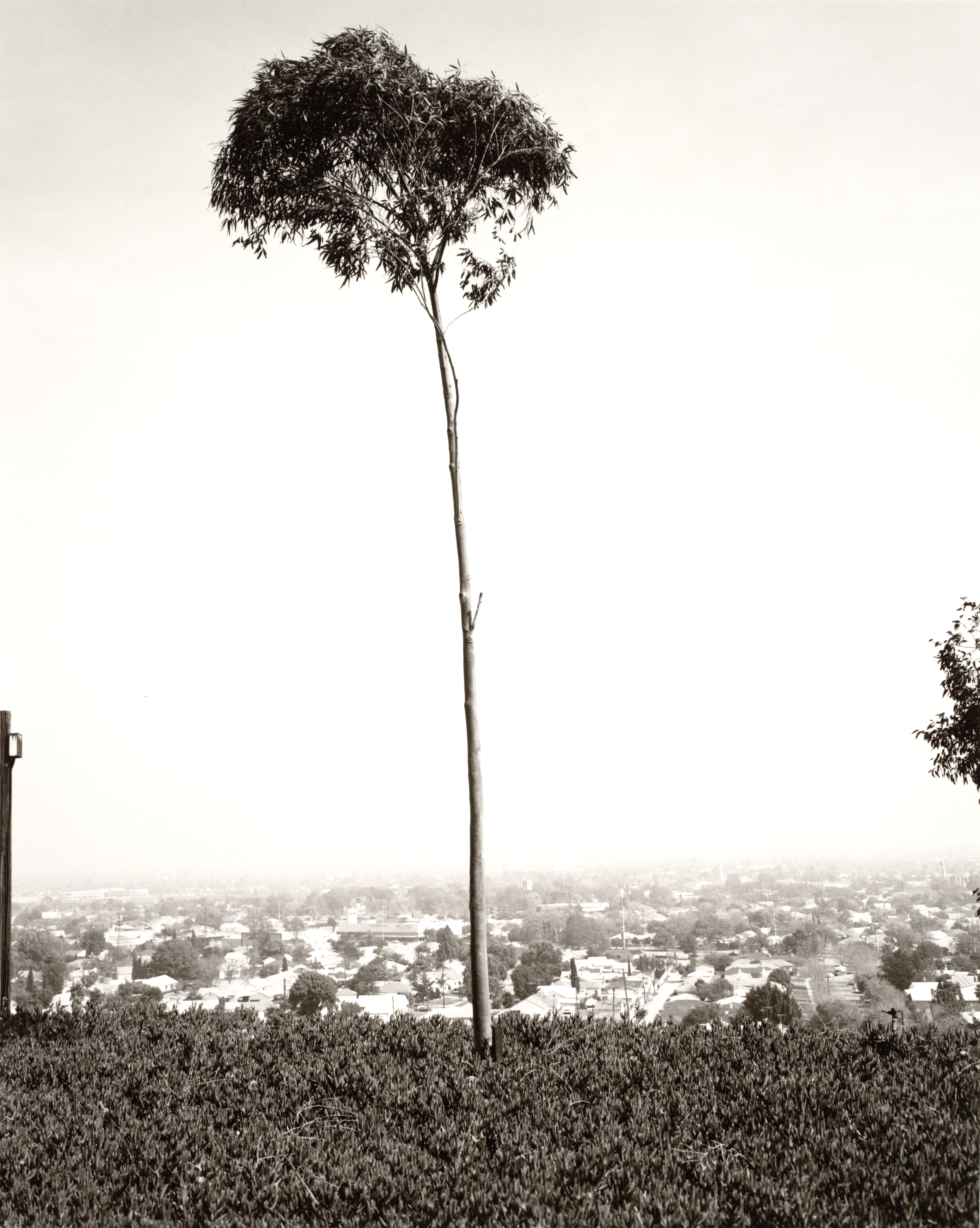 Robert AdamsOn Signal Hill, Overlooking Long Beach, California1983
Robert AdamsOn Signal Hill, Overlooking Long Beach, California1983 -
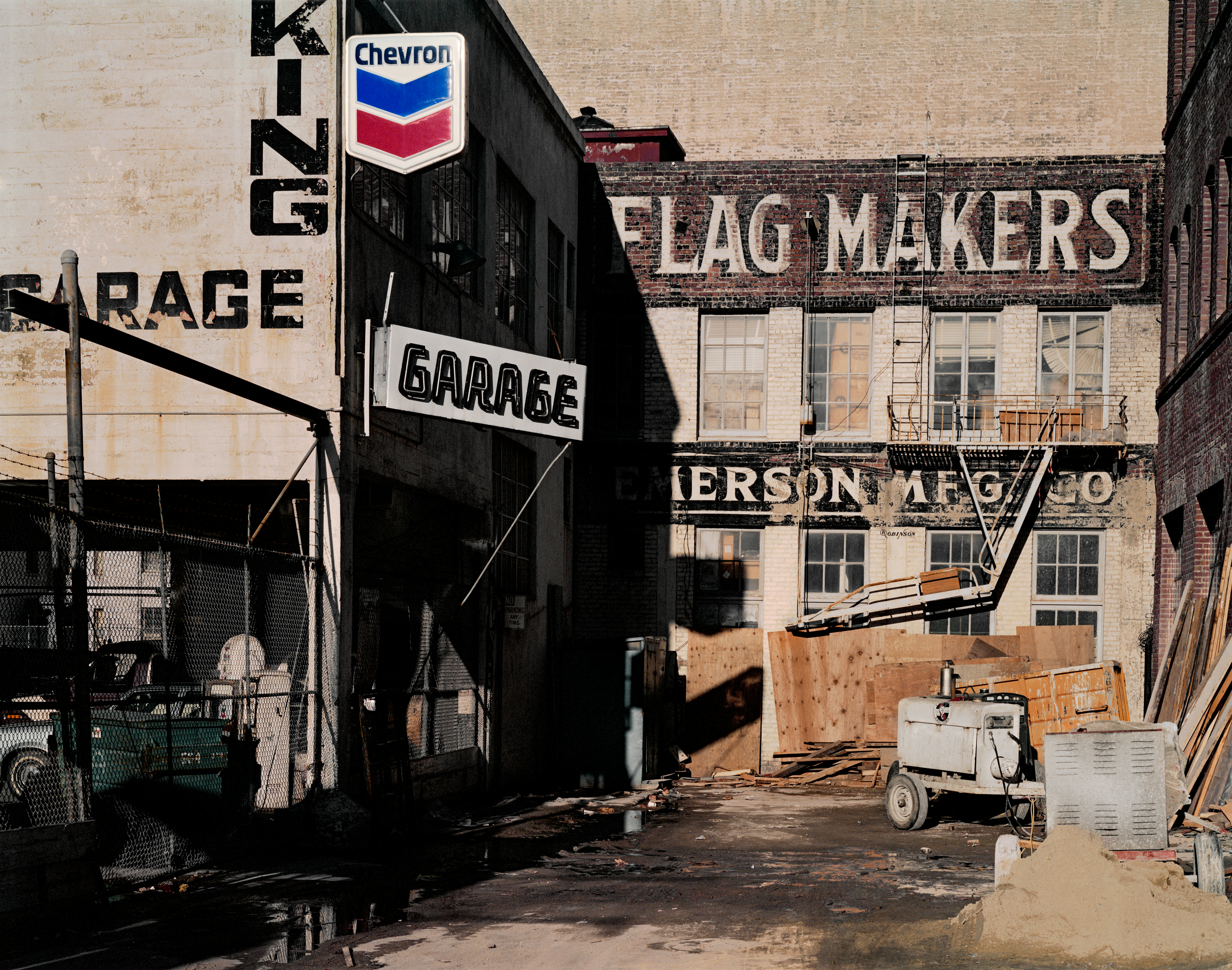 Janet DelaneyFlag Makers, Natoma at Third Street, from the series South of Market, 1978-19861982, printed 2003
Janet DelaneyFlag Makers, Natoma at Third Street, from the series South of Market, 1978-19861982, printed 2003 -
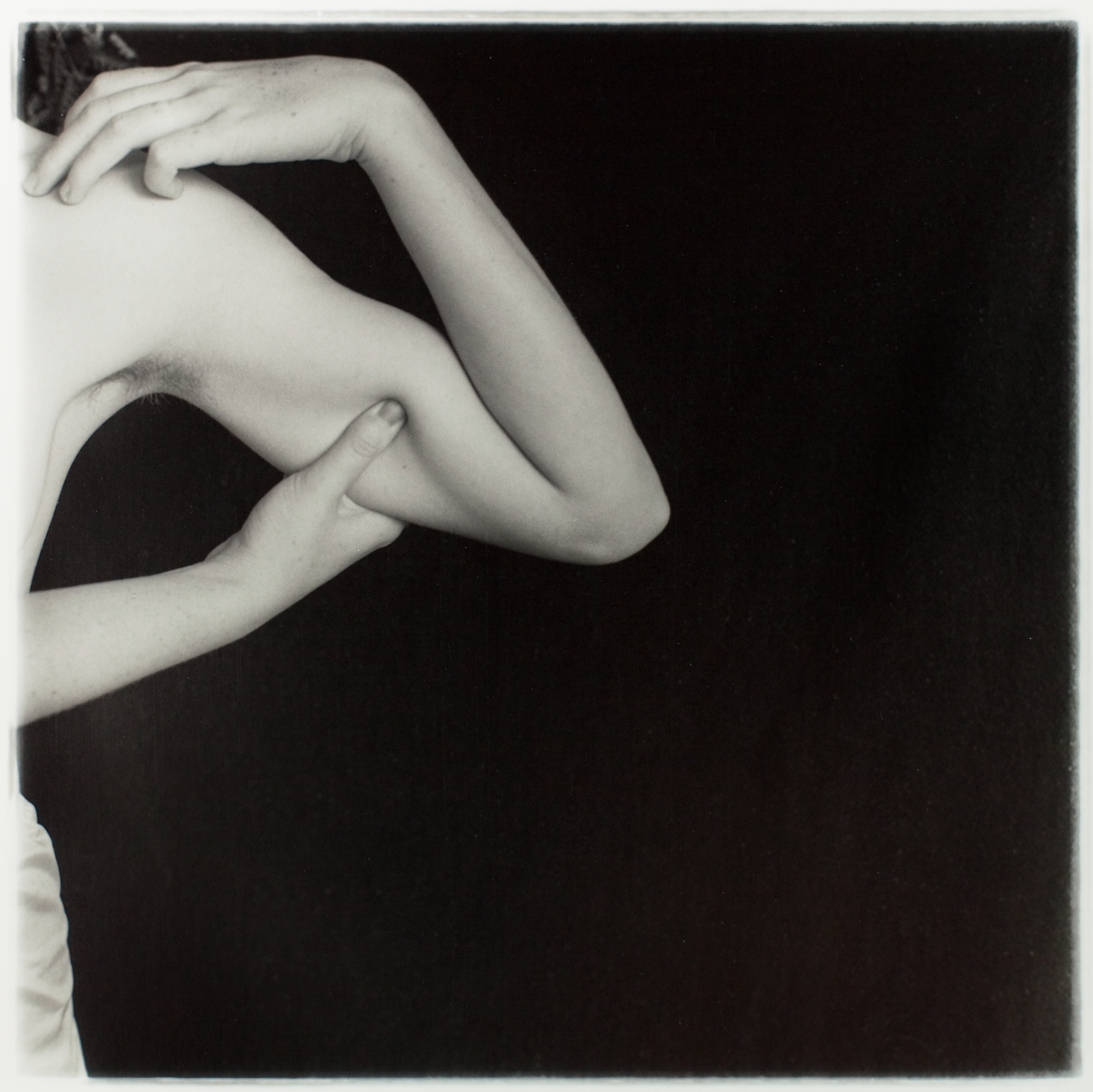 Francesca WoodmanUntitled, MacDowell Colony, Peterborough, New Hampshire1980
Francesca WoodmanUntitled, MacDowell Colony, Peterborough, New Hampshire1980 -
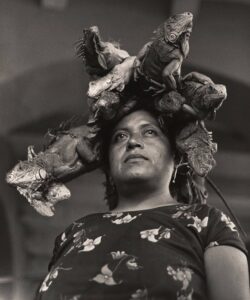 Graciela IturbideLa Nuestra Señora de las Iguanas, Juchitán, Oaxaca, México (Our Lady of the Iguanas, Juchitán, Oaxaca, Mexico)1979
Graciela IturbideLa Nuestra Señora de las Iguanas, Juchitán, Oaxaca, México (Our Lady of the Iguanas, Juchitán, Oaxaca, Mexico)1979 -
Lourdes GrobetPonzoña, Arena Coliseoca. 1983
-
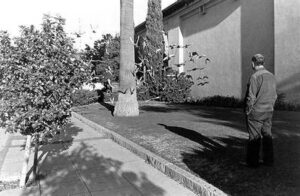 Henry WesselUntitled, from the portfolio New California Views1977
Henry WesselUntitled, from the portfolio New California Views1977 -
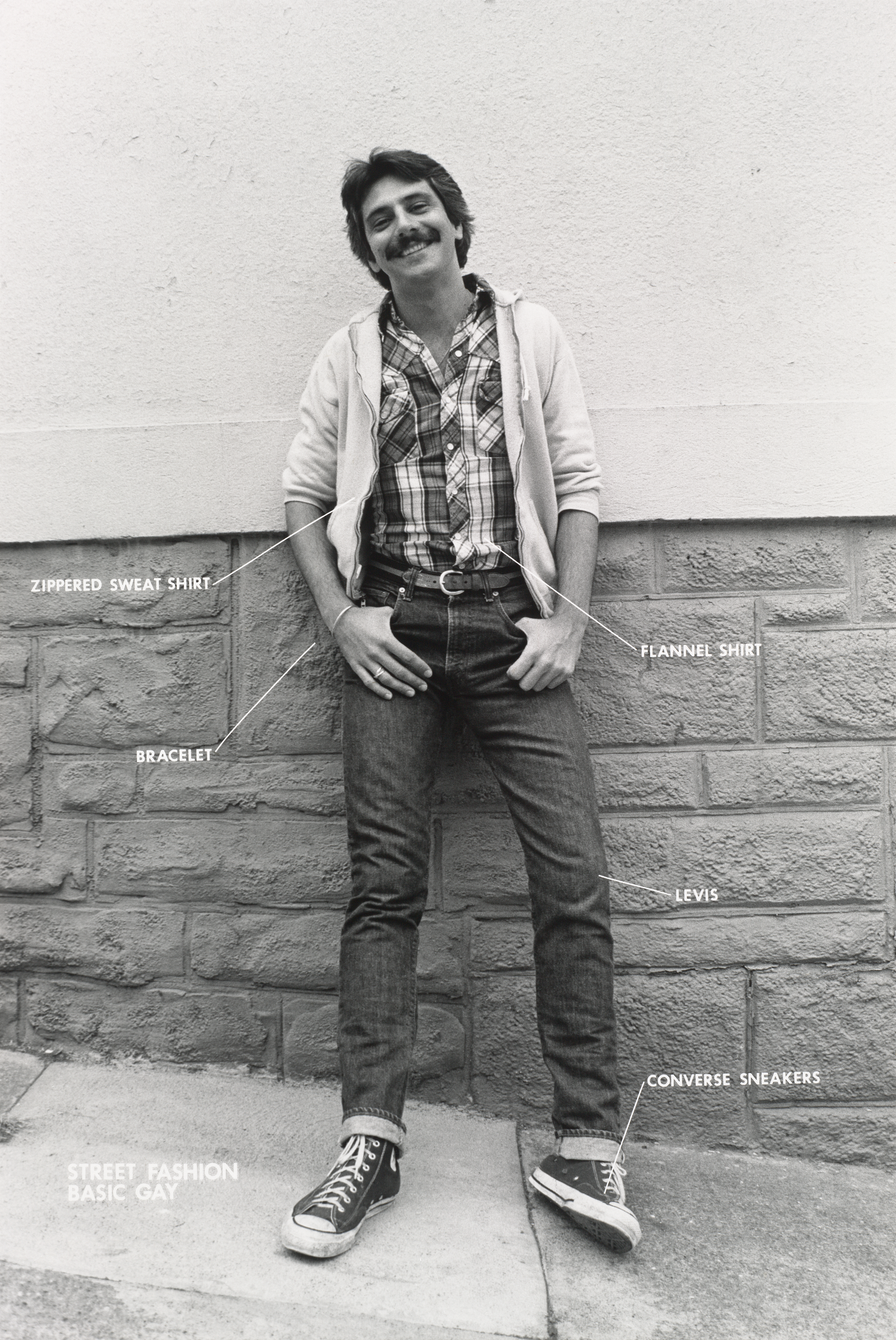 Hal FischerStreet Fashion: Basic Gay, from the series Gay Semiotics1977
Hal FischerStreet Fashion: Basic Gay, from the series Gay Semiotics1977 -
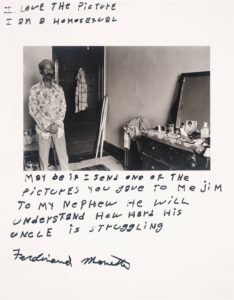 Jim GoldbergFerdinand Monette, from the series Rich and Poor1977
Jim GoldbergFerdinand Monette, from the series Rich and Poor1977 -
Masahisa FukaseSeikan Ferryboat, from the series Ravens1976
-
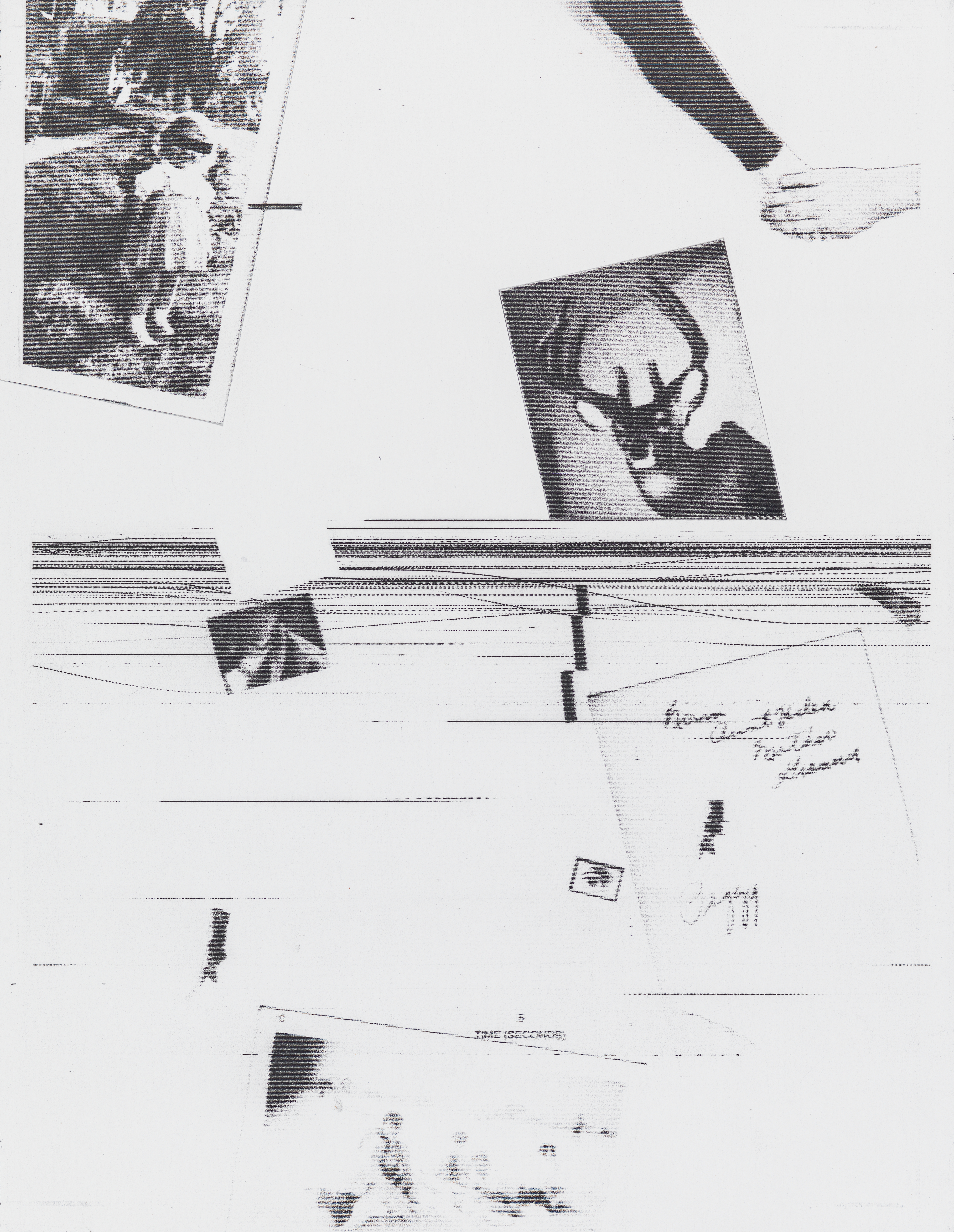 William LarsonUntitled, from the series Fire Flies1975
William LarsonUntitled, from the series Fire Flies1975 -
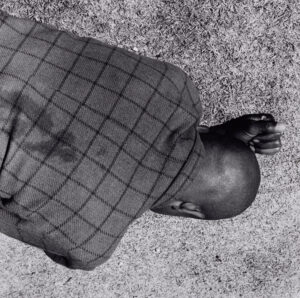 David GoldblattMan sleeping, Joubert Park, Johannesburg. April 1975, from the series Particulars1975
David GoldblattMan sleeping, Joubert Park, Johannesburg. April 1975, from the series Particulars1975 -
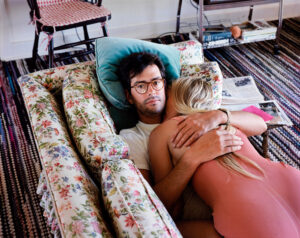 Stephen ShoreMichael and Sandy Marsh, Amarillo, Texas, September 27, 19741974, printed 2014
Stephen ShoreMichael and Sandy Marsh, Amarillo, Texas, September 27, 19741974, printed 2014 -
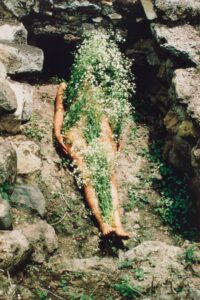 Ana MendietaImagen de Yagul, from the series Silueta Works in Mexico 1973-19771973
Ana MendietaImagen de Yagul, from the series Silueta Works in Mexico 1973-19771973 -
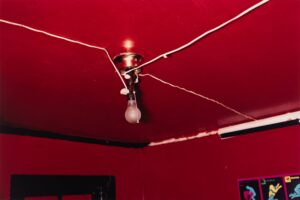 William EgglestonUntitled, Greenwood, Mississippi1973
William EgglestonUntitled, Greenwood, Mississippi1973 -
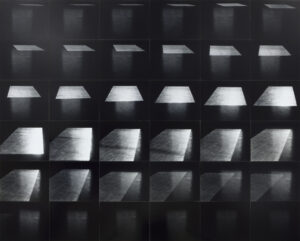 Lew ThomasLight on the Floor1972, printed 2001
Lew ThomasLight on the Floor1972, printed 2001 -
Vito Acconci#6 Push-Ups1969
-
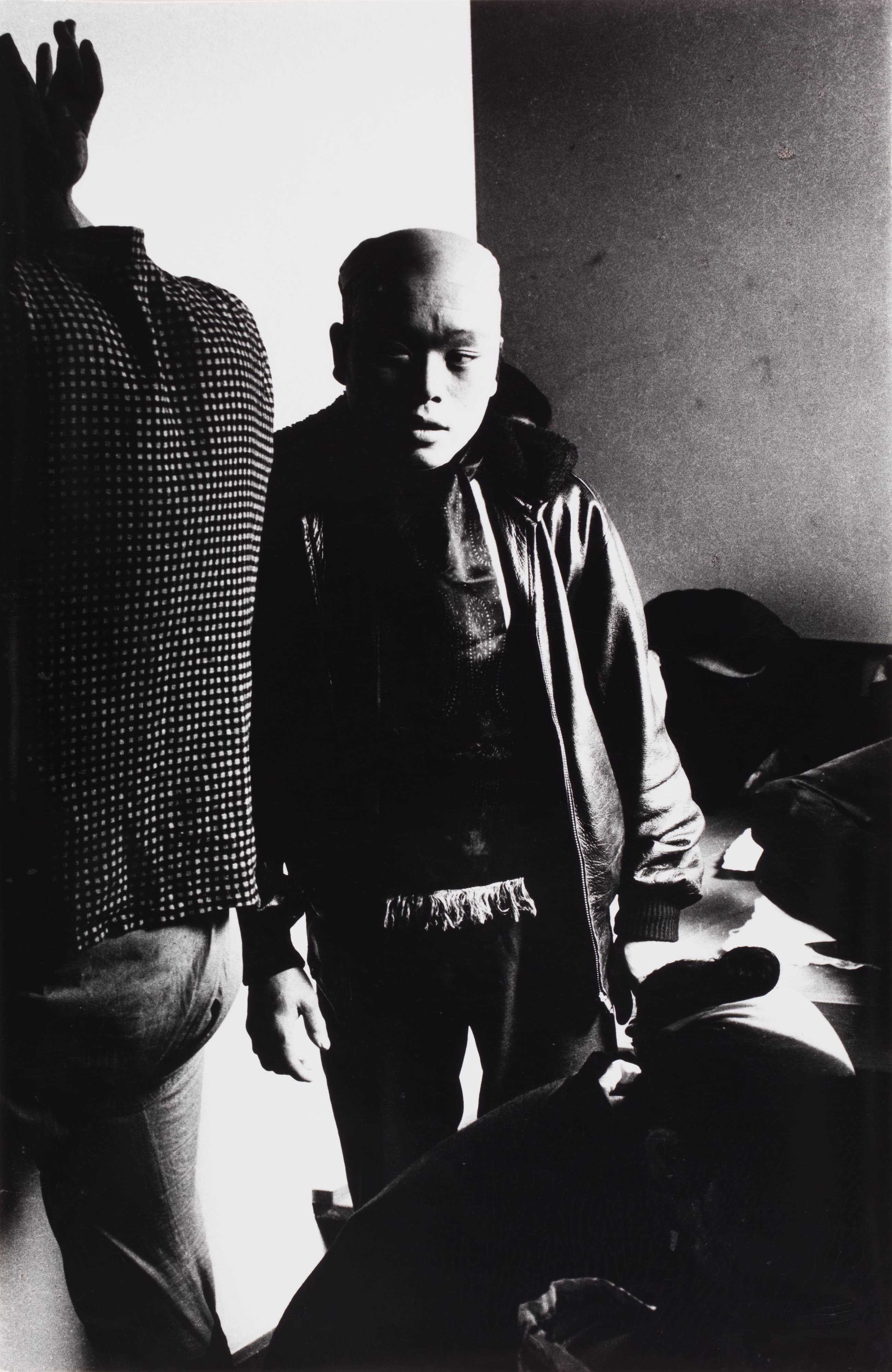 Daido MoriyamaJapan Theater1966
Daido MoriyamaJapan Theater1966 -
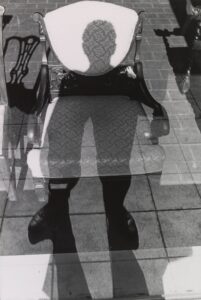 Lee FriedlanderWilmington, Delaware1965
Lee FriedlanderWilmington, Delaware1965 -
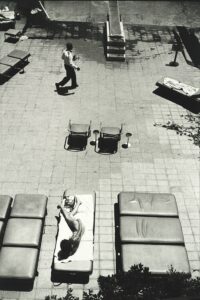 Garry WinograndUntitled, from the portfolio New California Views1964; printed 1979
Garry WinograndUntitled, from the portfolio New California Views1964; printed 1979 -
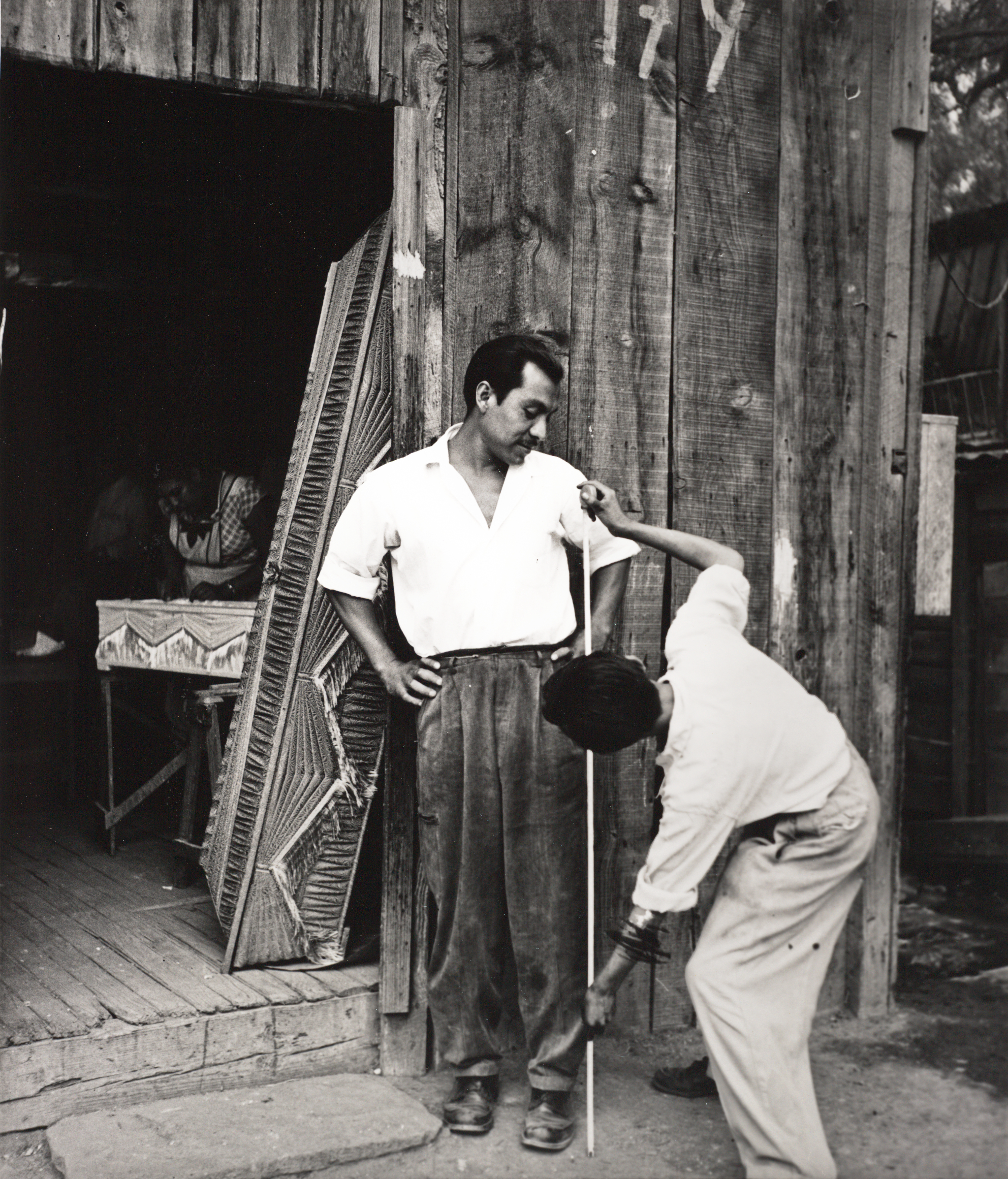 Nacho LópezConstructores de ataúdes, Calle Nonoalco, Ciudad de México (Coffin Makers, Nonoalco Street, Mexico City)1959, printed later
Nacho LópezConstructores de ataúdes, Calle Nonoalco, Ciudad de México (Coffin Makers, Nonoalco Street, Mexico City)1959, printed later -
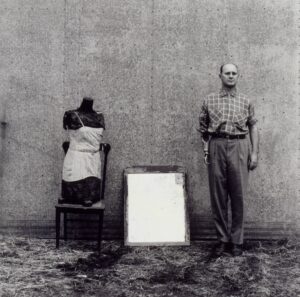 Ralph Eugene MeatyardUntitled1958–1959
Ralph Eugene MeatyardUntitled1958–1959 -
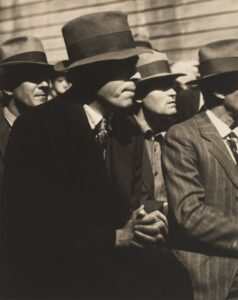 Dorothea LangeSan Francisco Waterfront Strike1934
Dorothea LangeSan Francisco Waterfront Strike1934 -
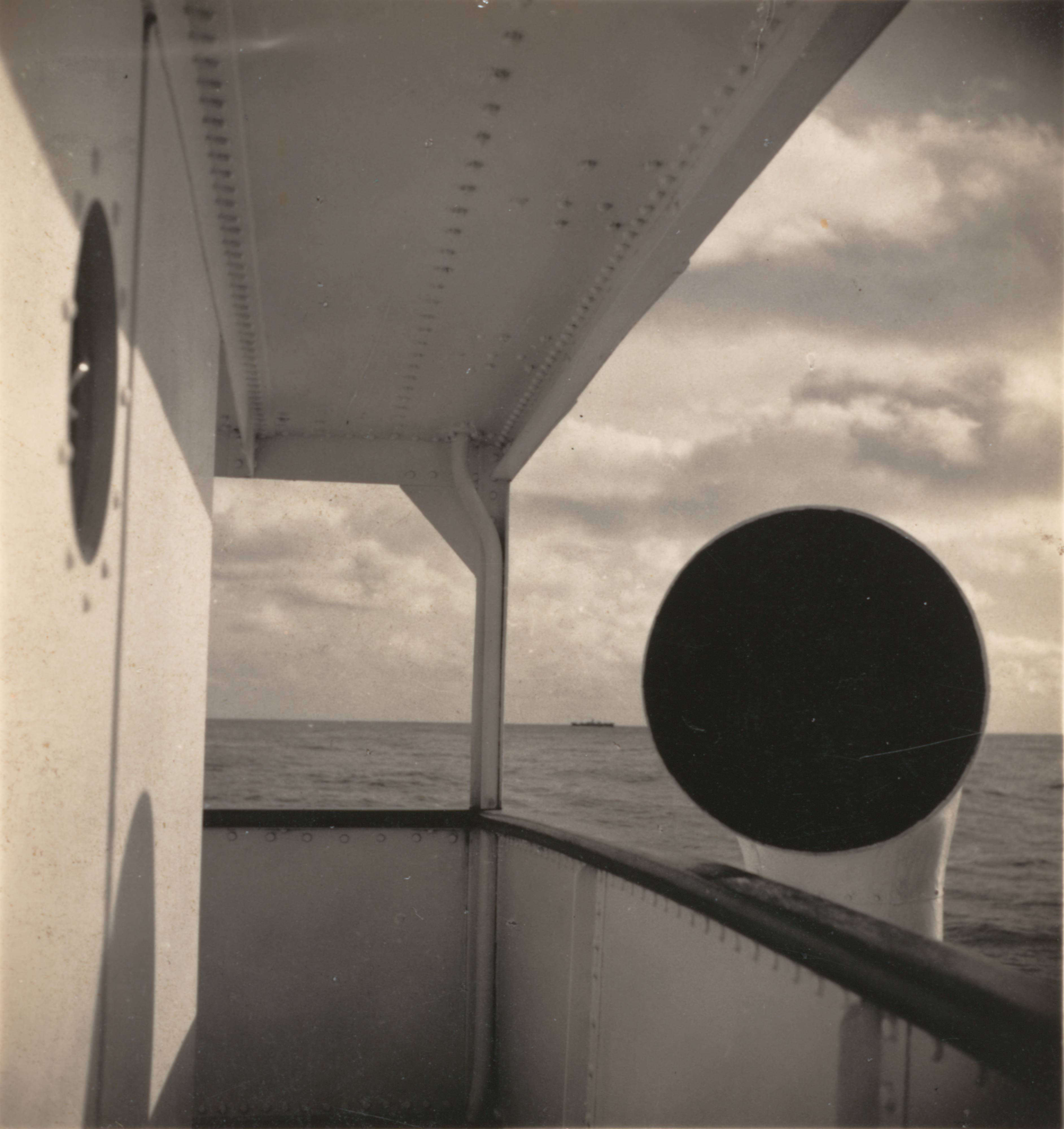 John GutmannPromenade Deck, M.S. Brimanger, Pacific Ocean1933
John GutmannPromenade Deck, M.S. Brimanger, Pacific Ocean1933 -
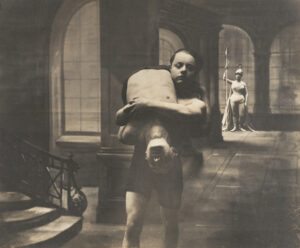 Dora MaarUntitledca. 1935
Dora MaarUntitledca. 1935 -
 László Moholy-NagyVom Funkturm (From the Radio Tower)1929
László Moholy-NagyVom Funkturm (From the Radio Tower)1929 -
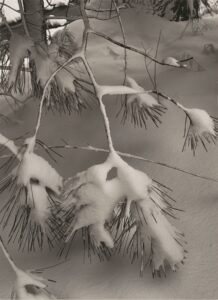 Ansel AdamsPine Branch in Snow, Yosemite National Park, Californiaca. 1932; printed 1935
Ansel AdamsPine Branch in Snow, Yosemite National Park, Californiaca. 1932; printed 1935 -
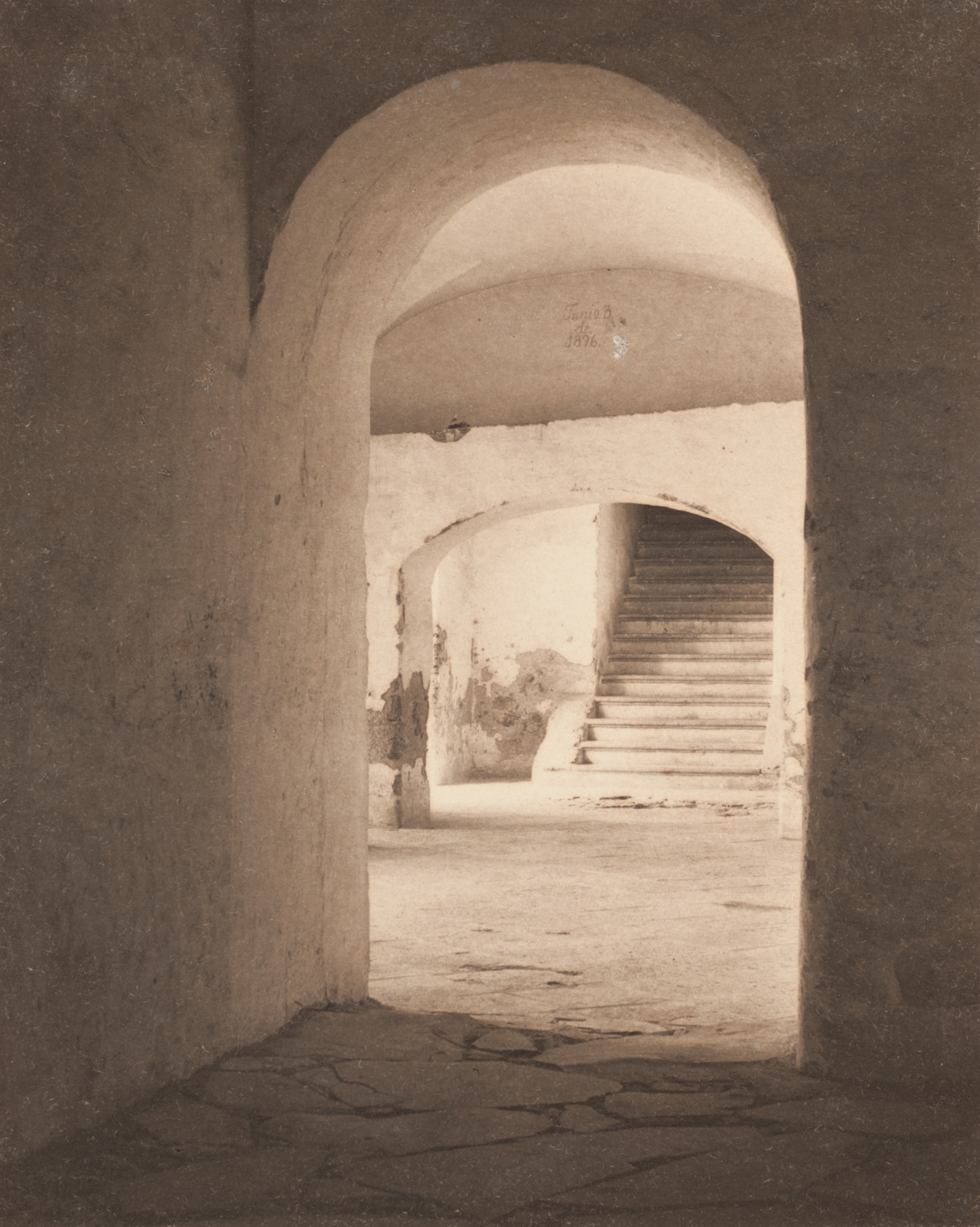 Tina ModottiConvent of Tepotzotlán, Mexico1924
Tina ModottiConvent of Tepotzotlán, Mexico1924 -
Edward WestonPirámide del Sol (Pyramid of the Sun)1923
-
Martin MunkácsiUntitled1923
-
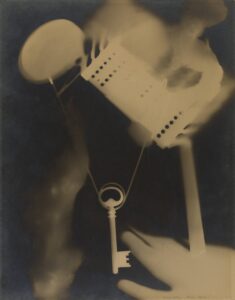 Man RayUntitled1922
Man RayUntitled1922 -
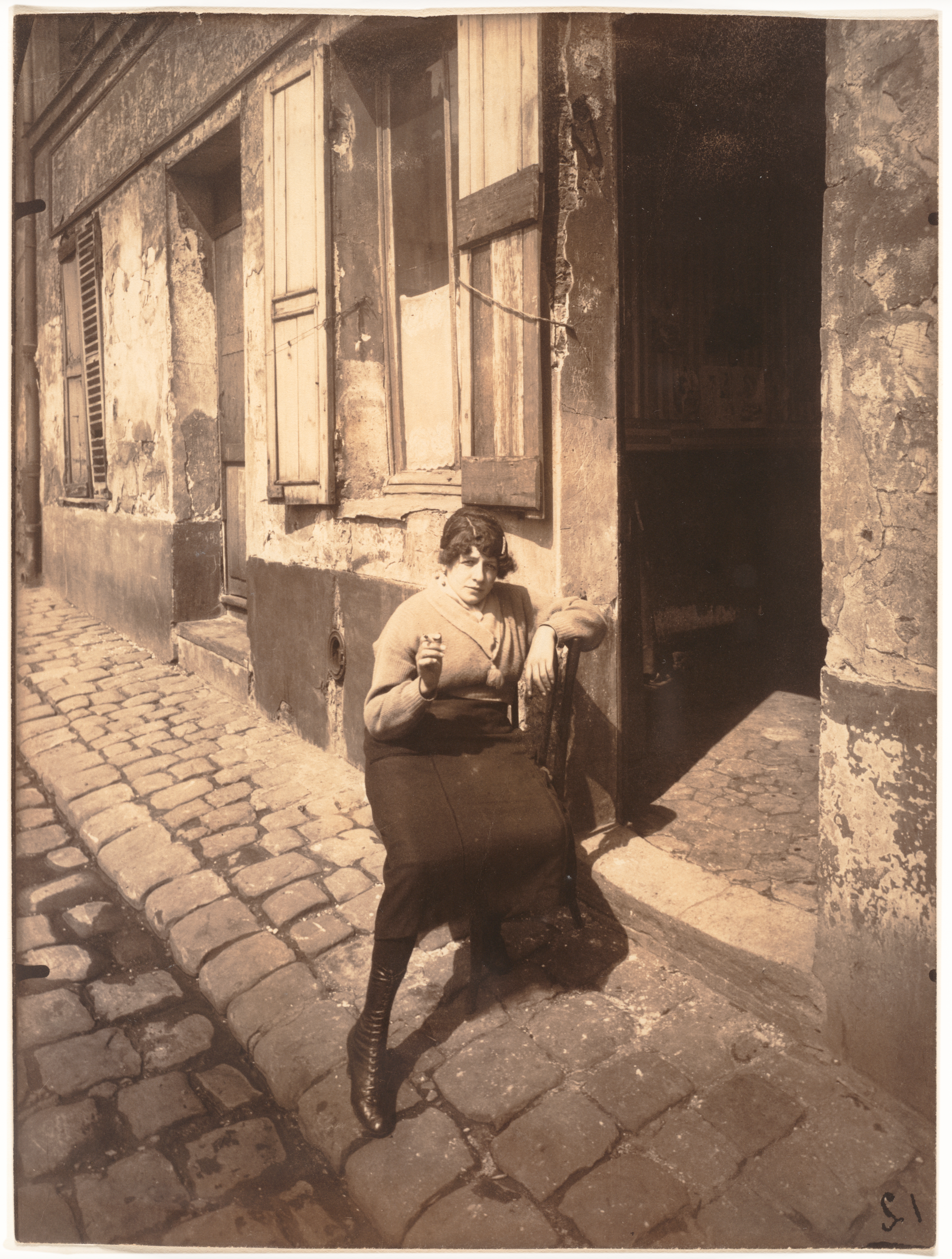 Eugène AtgetLa Villette, fille publique faisant le quart, 19e. Avril 1921 (La Villette, Streetwalker Waiting for a Client, 19th arrondissement. April 1921)1921
Eugène AtgetLa Villette, fille publique faisant le quart, 19e. Avril 1921 (La Villette, Streetwalker Waiting for a Client, 19th arrondissement. April 1921)1921 -
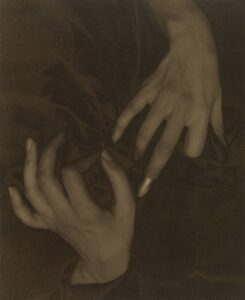 Alfred StieglitzGeorgia O'Keeffe—Hands and Thimble1919
Alfred StieglitzGeorgia O'Keeffe—Hands and Thimble1919 -
Charles SheelerDoylestown House - Closet Door with Scytheca. 1917
-
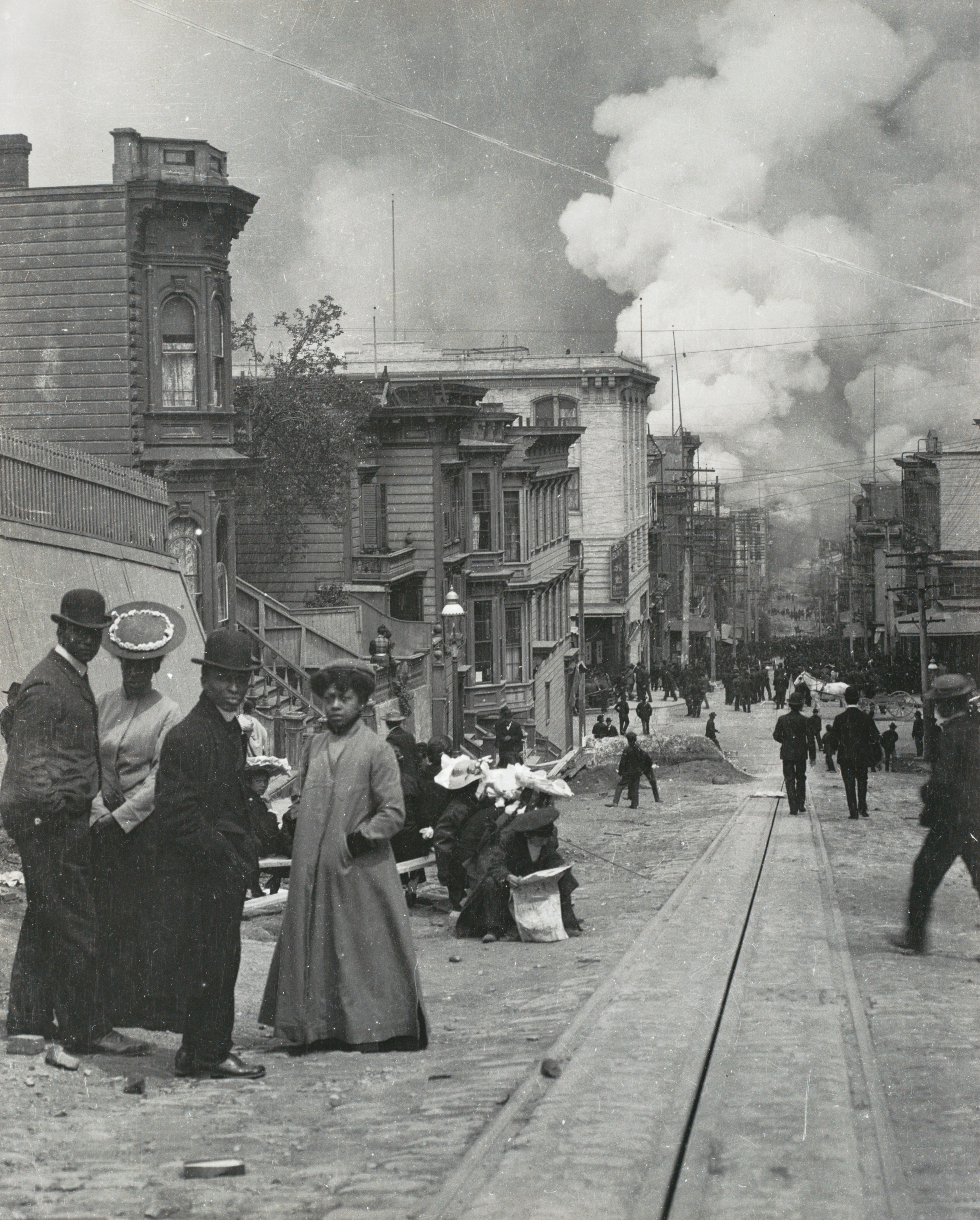 Arnold GentheUntitled1906, printed later
Arnold GentheUntitled1906, printed later -
Lewis Wickes HineWoman with Folded Headdress, Ellis Island, NY1905
-
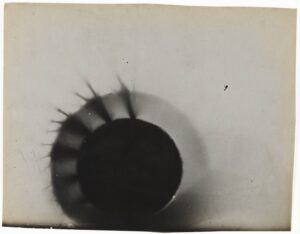 Henri BecquerelUranium salt crystalca. 1903
Henri BecquerelUranium salt crystalca. 1903 -
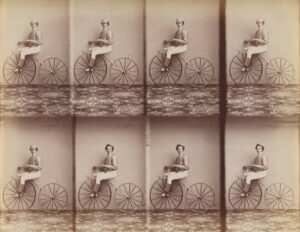 André Adolphe-Eugène DisdériMichaux sur son vélocipède (Michaux on His Bicycle)1867
André Adolphe-Eugène DisdériMichaux sur son vélocipède (Michaux on His Bicycle)1867 -
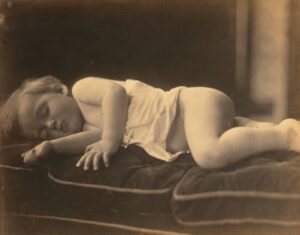 Julia Margaret CameronMy Grandchild, Archie Cameron, Aged Two Years, Three Months1865
Julia Margaret CameronMy Grandchild, Archie Cameron, Aged Two Years, Three Months1865 -
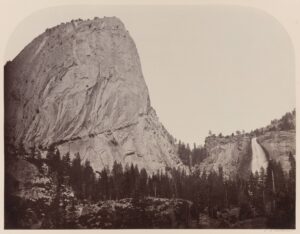 Carleton E. WatkinsMt. Broderick, Nevada Fall, 700 ft., Yosemite1861
Carleton E. WatkinsMt. Broderick, Nevada Fall, 700 ft., Yosemite1861 -
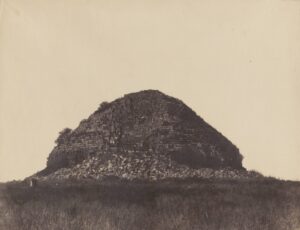 John Beasley GreeneTombeau de la Chrétienne. Vue du côté Est à la fin des travaux de la seconde exploration (5 avril 1856) (Tomb of the Christian Woman. View of the East Side at the End of the Second Exploration [April 5, 1856])1856
John Beasley GreeneTombeau de la Chrétienne. Vue du côté Est à la fin des travaux de la seconde exploration (5 avril 1856) (Tomb of the Christian Woman. View of the East Side at the End of the Second Exploration [April 5, 1856])1856 -
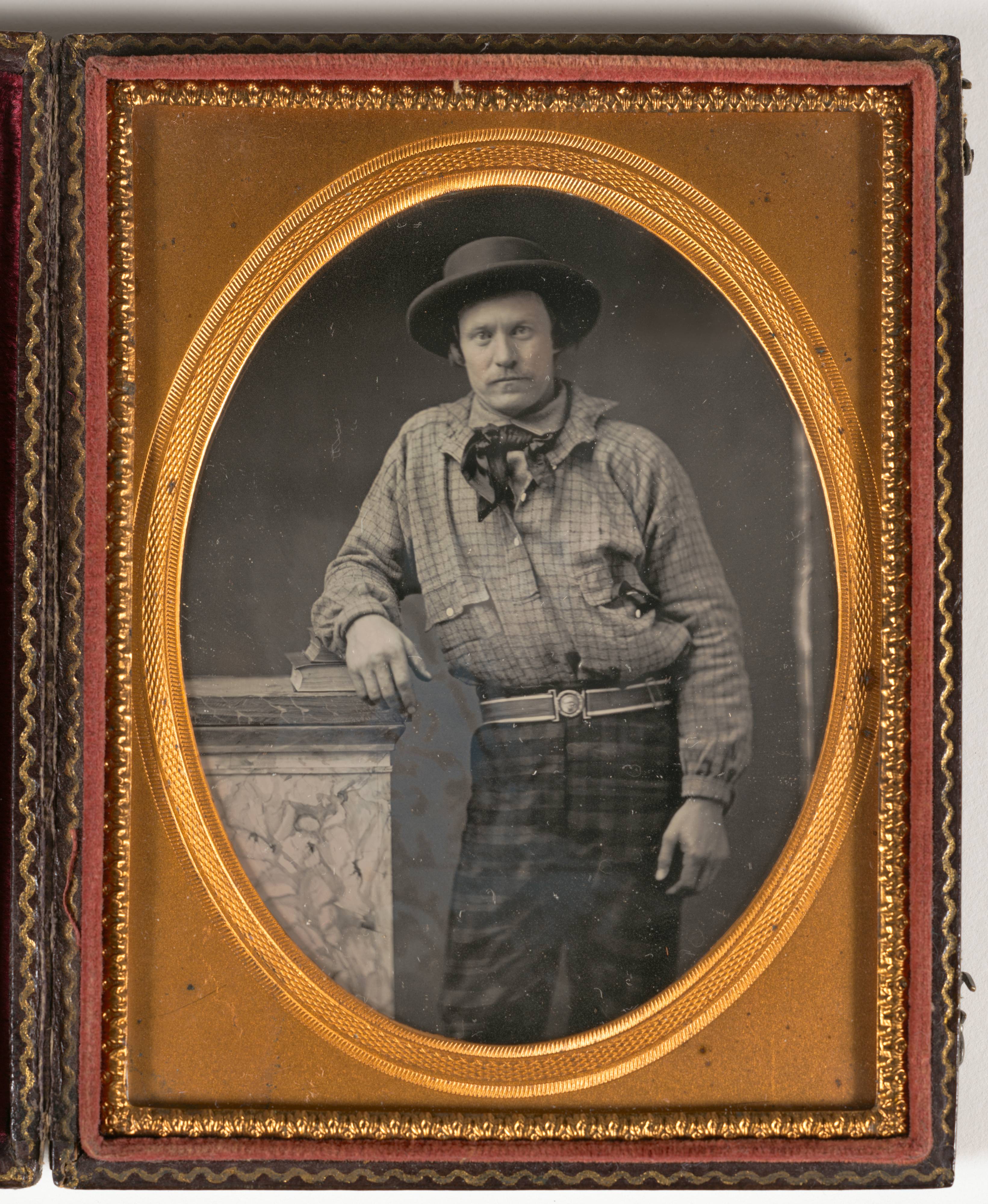 UnknownUntitledca. 1850
UnknownUntitledca. 1850 -
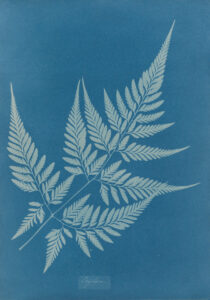 Anna AtkinsCeylonca. 1850
Anna AtkinsCeylonca. 1850
